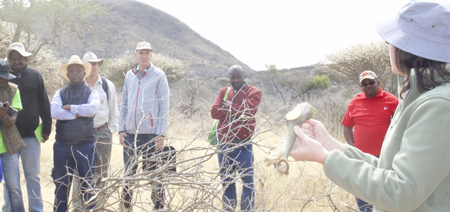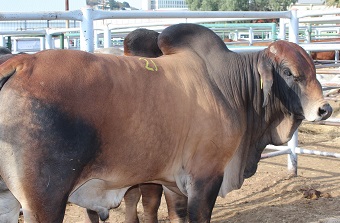
Utilising bush-based animal feed in communal and commercial farming settings

Progress Kashandula, General Manager of the De-bushing Advisory Service (DAS) said that the potential of utilising encroacher bush for animal feed has significant benefits for Namibia, especially during the dry season, or times of drought.
Kashandula said this at the opening of the training workshop on the potential of bush-based animal feed held at Farm Langbeen Ranch in Dordabis on 20 September.
“Bush based animal feed is one of the low hanging fruits for Namibia especially in filling up the gap in utilising bush parts. We get an opportunity to contribute towards solving bush encroachment and foresee a very big opportunity for our farming community and land users to take advantage of this value chain,” Kashandula added.
The training served as a follow up to the research that was conducted from April 2016 to July 2017 by partners including the Ministry of Agriculture, Water and Forestry/ Deutsche Gesellschaft für Internationale Zusammenarbeit (MAWF/GIZ) Support to De-bushing Project (now called Bush Control and Biomass Utilisation Project) and the UNDP Sustainable Management of Namibia’s Forested Land (NAFOLA).
The partners conducted intensive trials on encroacher bush-based animal feed production in Namibia. The results of these trials demonstrate a great potential for this value chain to contribute towards addressing bush encroachment when used in combination with other value chains.
Dagmar Honsbein, Research Coordinator on behalf of the MAWF/GIZ Bush Control and Biomass Utilisation (BCBU) Project advised, especially the small-scale farmers, that making feed does not need to be a very costly process with complex equipment; all that a farmer needs is the willingness and ability to do it.
“You don’t need a million dollars or machines to do bush-to-animal feed. After today, all you need is the bush and your willingness to get through challenging times, and mostly, your animals, through the drought,” she said.
Additionally, farmers were cautioned not to wait for a drought to produce animal feed but rather engage in pre-emptive feed production when bush carry foliage (from around October to March) to avoid the pressures that come with a drought.














































